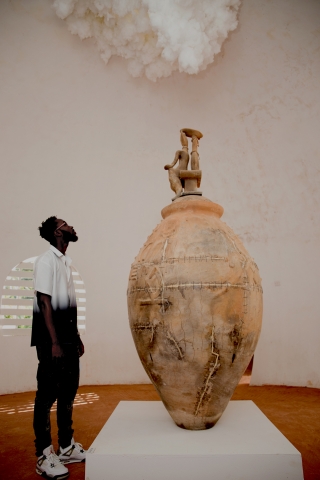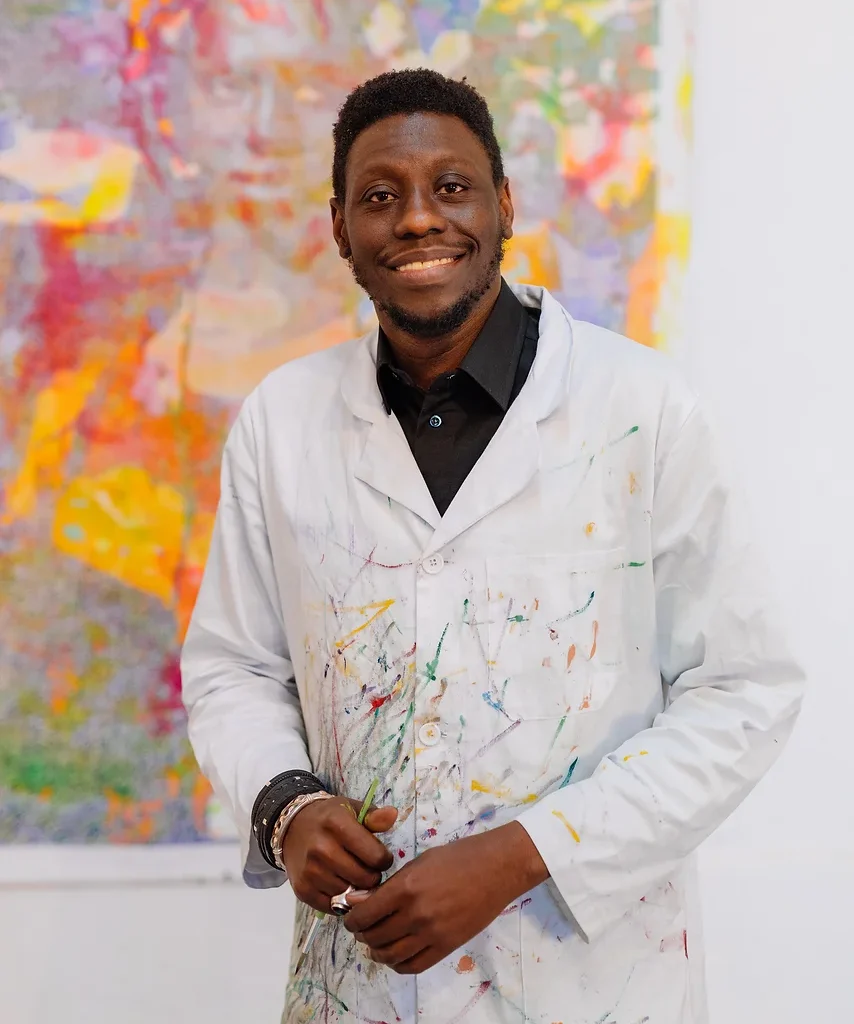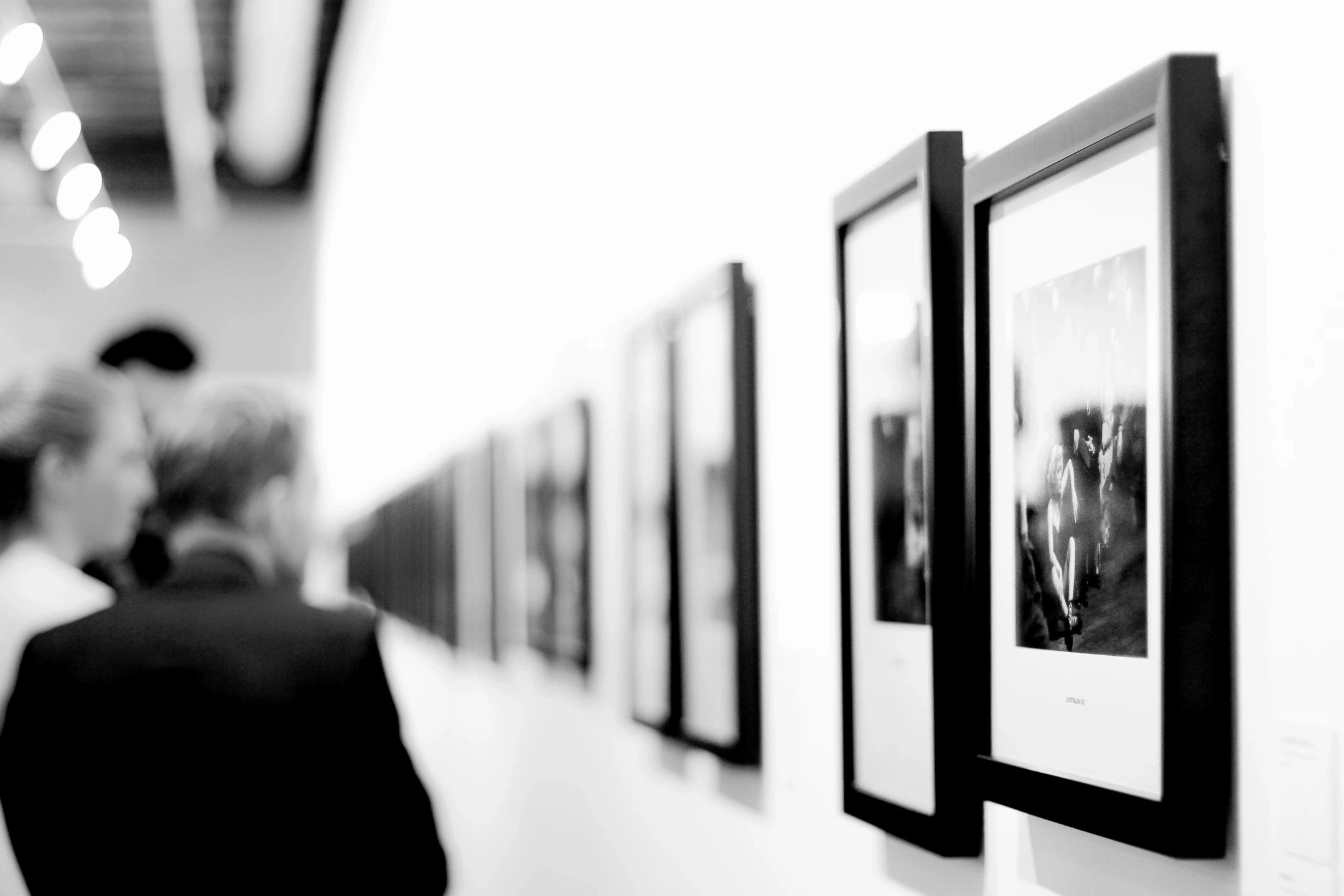The University of Michigan Museum of Art (UMMA) announced today a selection of recent acquisitions that capture the Museum’s collecting priorities across global cultures and material innovations. Among the acquired objects is a group of three works on paper by artist Andrea Carlson (Ojibwe) that are currently on view as part of a significant installation at the Museum, titled Future Cache. The installation highlights the history and experiences of the Cheboiganing (Burt Lake) Band of Ottawa and Chippewa Indians, who were violently burned from their land in Northern Michigan on October 15, 1900. The works of art acquired by UMMA imagine a future decolonized landscape. Also entering the collection is a monumental sculpture by Detroit-based artist Matthew Angelo Harrison, titled Celestial Tower, which addresses the troubling proliferation of African artworks and objects within the art market and among institutions. The work will go on view in UMMA’s galleries dedicated to African art on March 13. All of the acquisitions, which also include works of art by Jess T. Dugan, Suchitra Mattai, Frederick Ebenezer Okai, and Futamura Yoshimi, represent the first objects by these artists in the collection.
UMMA’s collection includes more than 20,000 objects, and has particular strengths in Chinese and Japanese art from antiquity to the 19th century, African art of the 19th and 20th centuries, and American art from the 19th century to the present. In 2021, UMMA completed an expansive strategic plan, which includes a strong emphasis on collections and provenance research as well as a commitment to expanding the collection with works of art by artists of color, women, works that build on the museum’s significant strengths in African, Asian and Michigan-based artists, and works that engage complexly with issues and ideas of our time. The acquisitions announced today highlight UMMA’s vision to collect across a broad spectrum of global and local voices and concerns.
“The works of art that we recently acquired display a depth of conceptual and material innovation and reflect the distinct and overlapping concerns of a diverse and global group of artists—concerns that include labor, technology, Indigenous rights, and cultural memory. We look forward to engaging our communities with these objects and the dynamic dialogues they inspire,” said Christina Olsen, UMMA’s Director. “We see our collection as a vital and expansive source for material ideas and research to generate new thinking and dialogue for U-M students and our broader community. As we expand the collection, it is important that it develops in ways that deepen our understanding of the past and the present, that foster wide-ranging conversations among people of differing perspectives and experiences, and that help us imagine and create a more equitable future.”
More details about the newly acquired works follow:
Frederick Ebenezer Okai, When the Gods Speak, Heaven Listens, 2022: Frederick Ebenezer Okai (b. 1986, Ghanaian) creates intricate, large-scale ceramic sculptures. When the Gods Speak, Heaven Listens was recently featured in the artist’s solo exhibition Earthy Structures and Contingent Breakthrough at the Gyamadudu Museum in central Ghana. Physically imposing at 174 inches in height, the sculpture consists of two parts: a clay body that is covered in ridges, cracks, and embossed patterns and a ceramic topper that depicts a human pair. Above the work hovers a cloud, made from duvet stuffing and lit from within. Creating ceramics at this scale is extremely difficult and to achieve his desired effects, Okai builds individual kilns around each of his pieces. This arduous and meticulous process is an essential aspect of Okai’s practice. This is the first work by Okai to enter UMMA’s collection and enhances the Museum’s strong holdings of both ceramics and African art—both key collecting areas.
Andrea Carlson, I’ll cut a hole, 2022; Nibi, 2022; A Selfish Man, 2022: Andrea Carlson (b. 1979, Ojibwe) works across a wide range of media, including drawing, painting, and mixed media installation. In her practice, she often explores fictions, stories, and the histories of objects and landscapes. Her work considers destructive settler colonial practices of assimilation and the consumption of cultural identities, while centering issues of land rights and celebrating Indigenous histories and futures. I’ll cut a hole, Nibi, and A Selfish Man are all currently on view at UMMA as part of the long-term installation Future Cache. These paintings on paper, which are presented alongside a 40-foot-tall memorial wall that commemorates the Cheboiganing (Burt Lake) Band of Ottawa and Chippewa Indians, feature imagined decolonized landscapes and a symbolic cache of provisions. These are the first works by Carlson to enter UMMA’s collection and support the Museum’s investment in artists of Indigenous heritage.
Suchitra Mattai, bodies and souls, 2021: Suchitra Mattai (b. 1973, American, born in Guyana) explores the ways in which history, culture, and prescribed gender roles are shaped by legacies of colonialism. Her complex works of art, which often combine painting, found objects, textile, embroidery, weaving, and video, embrace her own familial experiences and challenge formal Western accounts of history. bodies and souls, one of several large-scale tapestry works the artist created in 2021, is comprised of a vivid patchwork of found and collected shalwar kameez and sari suspended within a vintage, partially broken gilded frame. The installation is envisioned to connect South Asian diasporic communities through time and place. bodies and souls is the first work by Mattai to enter UMMA’s collection and joins other recent acquisitions by contemporary women artists, including those by Chitra Ganesh, Sonya Clark, Ayana V. Jackson, Ishiuchi Miyako, Ming Smith, and Stephanie Syjuco.
Matthew Angelo Harrison, Celestial Tower, 2021: Matthew Angelo Harrison (b. 1989, American) creates sculptures inspired by his experiences working at Ford Motor Company in Detroit, where he made clay prototypes for cars and automotive parts. His distinct body of work includes personal memorabilia, ephemera from the auto industry, and wooden objects that he suspends in blocks of acrylic resin created by 3D printers. In Celestial Tower, Harrison pushes us to consider how objects, and culture, gain and lose meaning and value through technological interventions, dislocation, and appropriation. The sculpture features a monumental mask from the Dogon of Mali, which Harrison has encased in 3D printed resin, radically shifting its symbolism. This is the first work by Harrison to enter UMMA’s collection and represents the Museum’s commitment to supporting artists from the region.
Futamura Yoshimi, Twist, 2021: Futamura Yoshimi (b. 1959, Japanese) creates intricate ceramic forms that are inspired by nature. To produce her rounded, organic sculptures, she uses a blend of stoneware clays and fired and raw granulated porcelain. With their earthy tones and surface, the resulting objects appear as though one could have naturally stumbled upon them outdoors. Twist offers an excellent example of Furamura’s practice, with the work mimicking the appearance of a hollowed out tree branch. This is the first work of art by Futamura to enter UMMA’s collection and further develops the Museum’s growing ceramics collection. The sculpture also creates a dynamic dialogue with UMMA’s current exhibition focused on American and Japanese ceramics: Clay as Soft Power.
Jess T. Dugan, Every Breath We Drew portfolio, 2019–2021: Jess T. Dugan’s (b. 1986, American) photography, video, and writing explores the power of identity, desire, and attachment. Drawing from their own experiences as a queer and nonbinary person, Dugan foregrounds intersections between individual personhood and the search for connection with others. The ten color photographs included in the Every Breath We Drew portfolio take influence from portrait painting, using natural light, color, gesture, and pose to imbue photographs of contemporary subjects with emotional intensity. These are the first works by Dugan to enter UMMA’s collection and add to a growing representation of contemporary queer voices and experiences. Selections from the portfolio are currently on view as part of the Museum’s You Are Here exhibition.









